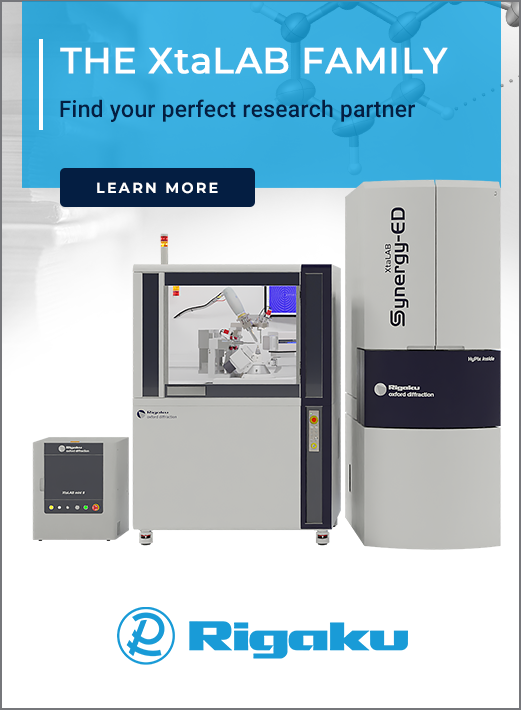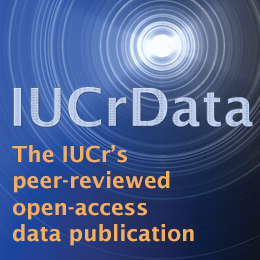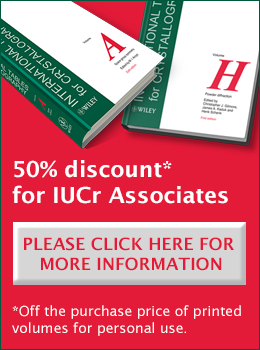


Crystallography in Africa
First OpenLab in Brazzaville, Republic of Congo: Utilization of diffractometers in remote mode for the first time
![Thumbnail [Thumbnail]](https://www.iucr.org/__data/assets/image/0008/154916/thumbnail.jpg)
Loufoulakari Falls, a Congo River tributary.
The first OpenLab on Crystallography using remote diffraction facilities was held in Brazzaville, Republic of Congo, from 11 to 22 May 2022 at the Marien Ngouabi University under the auspices of the IUCr Africa Initiative and the African Crystallographic Association (AfCA). This OpenLab was organized by the Congolese Association of Crystallography (ACCr) in partnership with Marien Ngouabi University, the Geological and Mining Research Center (CRGM) of Brazzaville, the CRM2 laboratory (CNRS/Université de Lorraine, France) with financial support from the IUCr, the European Crystallographic Association (ECA) and the National Petroleum Society of Congo (SNPC). The organizing committee of this event was chaired by Professor Joseph-Marie Saint-Bastia Moutou and Dr Ferland Ngoro-Elenga, President and General Secretary of the Congolese Association of Crystallography (ACCr), respectively.
This event was attended by 28 young academics and PhD students in Chemistry, Geology and Physics from Republic of Congo, Democratic Republic of Congo and Gabon. The unique aspect of this OpenLab was the realization, for the first time, of remote X-ray diffraction measurements thanks to a partnership with the Plateforme de mesures de diffraction et de diffusion des rayons X (PMD2X) of the Université de Lorraine. Three African lecturers, Drs Patrice Kenfack Tsobnang (University of Dschang, Cameroon), Adam Bouraima (Université des Sciences et Techniques of Masuku, Gabon) and Yvon Bibila Mayaya Bisseyou (University Houphouët Boigny, Ivory Coast, and Marien Ngouabi University, Congo), taught on site with Professor Claude Lecomte (Université de Lorraine). Drs Florence Porcher, Emmanuel Wenger, El-Eulmi Bendeif and Pierrick Durand, all from the Université de Lorraine, connected remotely.
![[Fig. 1]](https://www.iucr.org/__data/assets/image/0007/154933/Picture1.png)
The OpenLab began with an inaugural lecture given by Professor Lecomte on the theme "Crystallography: an essential science at the crossroads of Physics, Chemistry, Geology and Life Sciences". The lecture took place in the auditorium of the main Library of the Marien Ngouabi University in the presence of the authorities of the Marien Ngouabi University, several professors of the Faculties of the University and of the Denis Sassou-N'Guesso University of Kintélé, and all the participants of the OpenLab. This activity was covered by the national media and ended with exchanges between Professor Lecomte and the audience on the one hand and on the other hand between Professors Moutou and Lecomte (respectively, president of the organizing committee and the scientific committee of this OpenLab) with the written, oral press and TV. The event was the subject of an article in the daily newspaper of the Congolese Information Agency of the Ministry of Communication and Media of the Republic of Congo.
![[Fig. 2]](https://www.iucr.org/__data/assets/image/0008/154934/Picture2.jpg)
After this opening ceremony, theoretical courses and tutorial sessions were carried out. These courses focused on crystal lattices, crystallographic calculations, point groups, space groups, the International Tables of Crystallography, Fourier series and transforms, X-ray scattering by atoms and molecules and diffraction by crystals, introduction to single-crystal and powder diffraction, and resolution and refinements of crystal structures from single-crystal and powder diffraction data.
![[Fig. 3]](https://www.iucr.org/__data/assets/image/0009/154935/Picture34.png)
After 3.5 days of lectures and tutorials, practical activities were carried out for 5 more days. These activities focused on the remote use in Brazzaville of the CRM2 Bruker D8 Venture single-crystal and Panalytical X’pert PRO powder diffractometers. During these hands-on activities, the attendees discussed and proposed data collection strategies; then, data reduction was critically made. Data from the single-crystal diffraction measurements were used to determine crystal structures.
Crystals of phases I and II of paracetamol were used for application. Thanks to the cameras installed in the CRM2 diffractometer rooms in Nancy, Dr Wenger, in remote mode, showed the participants how to select and mount a crystal, put it on the goniometer head and center the crystal on the diffractometer. Then, Dr Kenfack Tsobnang, on-site in Brazzaville, controlled the diffractometer and showed the attendees how to perform the measurements.
![[Fig. 4]](https://www.iucr.org/__data/assets/image/0010/154936/Picture567.png)
After diffraction data collection and processing, the participants solved the crystal structures of the two paracetamol phases under the supervision of the teachers present on site. WINGX was used for this purpose with a special emphasis on SHELXS, SHELXL, ORTEP and Mercury software. The output files were thoroughly discussed and explained to the participants and the CIFs were reviewed. All participants solved and refined the structures of the monoclinic and orthorhombic phases of paracetamol.
For powder diffraction, the activities focused on the measurements of samples of pure paracetamol and of the drug ‘doliprane for children’. The analysis was performed using Qualx software and the Crystallographic Open Database (COD). A Rietveld refinement was done on ‘doliprane for children’ with Fullprof software under the remote supervision of Dr Porcher, assisted by the teachers present on site.
![[Fig. 5]](https://www.iucr.org/__data/assets/image/0011/154937/Picture8.png)
After these hands-on activities on the determination of the crystal structures of phases I and II of paracetamol (with single-crystal measurements) and the phase analysis of the pure paracetamol followed by the quantification of phases in ‘doliprane for children’, lectures on crystallographic databases, in particular the Cambridge Structural Database (CSD), were given. Practical activities with the database were carried out and the Frank H. Allen International Research and Education (FAIRE) Program was presented.
At the end of the training, the attendees participated in a general discussion on using crystal structures to answer basic questions in research. Drs Kenfack Tsobnang, Bibila Mayaya Bisseyou and Adam Bouraima, and Professor Lecomte, used some of their research works to teach this course. The course ended with a critical reading of some papers published in Acta Crystallographica reporting crystal structures.
![[Fig. 6]](https://www.iucr.org/__data/assets/image/0003/154938/Picture9.png)
On Sunday during the OpenLab, the organizing committee offered participants an opportunity to relax at the Loufoulakari Falls on a tributary of the Congo River.
![[Fig. 7]](https://www.iucr.org/__data/assets/image/0004/154939/Picture10.jpg)
This OpenLab shows that measurements in remote mode can be carried out successfully and easily anywhere. These remote measurements, in the unanimous opinion of the attendees, have undeniably contributed to the success of this Brazzaville OpenLab and opened the way for the future.
![[Fig. 8]](https://www.iucr.org/__data/assets/image/0005/154940/Sponsors.jpg)
Copyright © - All Rights Reserved - International Union of Crystallography








